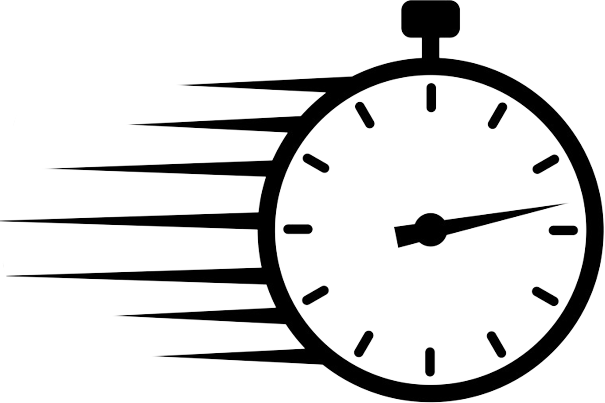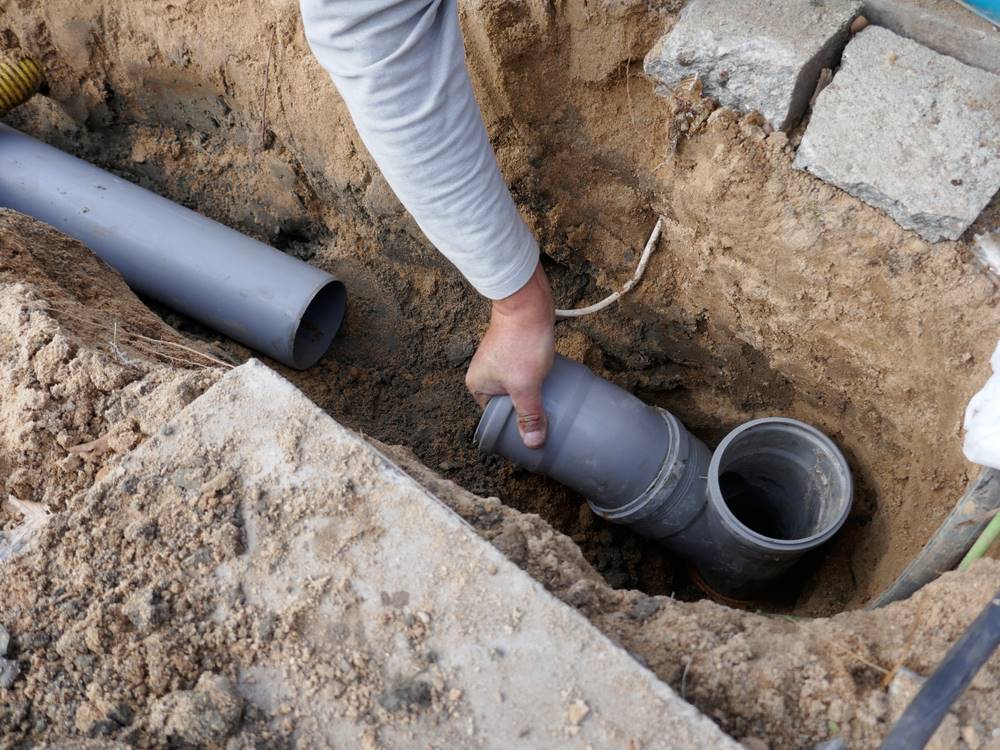Site, Sewer & House Connections
5 Days- That's a Lightning Fast Turnaround Time!
1
Upload Files and Pay
Upload PDF or CAD files, and pay to start the process. An engineer is auto-assigned to your project.
2
Document Review
An engineer will review all the documents shared and connect with you if anything else is required. Initial work starts.
3
Work Starts
Actual design/ report creation work begins.
4
Quality Check
The design and report are checked by the project manager to make sure 100% quality work is delivered.
5
Delivery
The design/ report is delivered to you.
NEED HELP OR ADDITIONALINFORMATION?
C A L L U S N O W
(646) 776-4010Get Your Site, Sewer and House Connections In 3 Easy Steps
0%
Get the DEP and DOB approval
All in One Go
Designs with no errors
100% Precision
Get the site connection design within
5 Days
Compact and cost efficient design
Save Cost
$ 1500
Site, Sewer and House Connections
Documents Required
Floor plan in CAD, building occupancy details, and city sewer plan with manhole locations and elevations.
Delivery Time & Standards
We deliver your design (digitally) within 5 business days as per NYC DEP standards.
What's not Covered
This service does not cover site visits, stamping, DOB/DEP filing, and more than 2 minor iterations.
Service Constraint
The service fee is capped per connection.
$1500*
Site, Sewer & House Connections


Get your site connection design at lightning speed.


Compact and cost-efficient design.


Designs with no errors.


Get your DEP and DOB approval.
Site, Sewer and House Connections
The New York City (NYC) Department of Environmental Protection (DEP) is responsible for all approvals relating to the City’s water and sewer infrastructure. This includes all connections to the existing public sanitary or combined water and sewer system. Our MEP engineers produce building sewer design that is 100% compliant with the NYC Environmental Protection Sewer Design Standards.
Quick, Efficient Applications
We handle sewer availability certification ensuring fast turnaround times to avoid unnecessary delays with your building process.
Compliant Design of Sewers
Our MEP engineers produce building sewer design that is 100% compliant with the NYC Environmental Protection Sewer Design Standards.
Flat Rate Filings for Utilities
Utility companies require professional engineers to prepare filings, and we offer a flat rate for all utility filings including new sewer services.


Our on-demand engineering expert
Still not sure about how to proceed?
YOU CAN WRITE TO ME AT inquiry@ny-engineers.com
The New York City (NYC) Department of Environmental Protection (DEP) is responsible for all approvals relating to the City’s water and sewer infrastructure. This includes all connections to the existing public sanitary or combined water and sewer system.
Regulations relating to water supply and distribution as well as sanitary and storm drainage sanitary are contained in the NYC Plumbing Code 2014.
Sewer connection includes connection:
- Of a new water distribution system to a public water main supply.
- Of a sanitary system to a public sanitary or combined sewer.
- To a public storm sewer or public combined sewer, depending on what is available and acceptable.
The terminology used in the industry can be confusing to the layman, which is just one small reason why only professionals, including MEP engineers, can design, construct and install water and sewer systems.
Water supply systems incorporate water service pipes, water distribution pipes, and all the connecting pipes, fittings, and control values required for the water supply system.
Drainage systems incorporate all the piping required to convey rainwater, sewage, or any liquid waste to a point where it can be disposed of. The drainage system does not include the mains of a public sewer system or any sewage disposal or treatment plant.
Plumbing systems include water supply and distribution pipes as well as plumbing fixtures and traps; equipment designed to use or treat water; soil, waste, and vent pipes; building drains and both sanitary and storm sewers.
Sewage is any form of liquid waste that contains animal or vegetable matter in suspension or solution, or chemicals in solution that includes wastewater, non-potable clear water waste, human and animal waste, and industrial waste.
Sewers are constructed to remove sewage and/or stormwater. There are various kinds:
- Building sewers extend from the end of building drains and convey sewage to a point of disposal, to a sewage disposal system, or to some other type of sewer.
- Combined sewers are designed to receive a combination of stormwater, groundwater, non-potable clear water waste, and sewage.
- Private sewers are designed and constructed in accordance with the City’s requirements to serve specific developments. They discharge into approved outlets.
- Sanitary sewage only conveys sewage.
- Storm sewers only convey stormwater, groundwater, and non-potable clear water waste.
Before construction of a sewer can be initiated, a sewer certification application must be submitted to the DEP. The purpose of this is to verify that there is an adequate sewer to receive stormwater and sanitary flow from a site. Certification is required for any new connection to sewers, private drains, and septic systems.
Only professional engineers or registered architects who are licensed in the State of New York may submit applications to the DEP. Previously, an SD 1&2 (also referred to as an SD 1/2) form was required for all new connections to NYC sewers, including private sewers. The SD 1&2 form is no longer used by the NYC government.
As required, before we submit sewer certification applications we refer to the DEP sewer maps that identify the locations of manholes and both sanitary and storm sewers. We also check existing drainage plans and topographic maps that provide invaluable information about watercourses and elevation contours. If there is not a sewer that fronts the property, we identify alternative methods for site drainage. This sometimes involves extending an existing sewer located nearby.
Once we have approval for sewer certification construction , we can commence in accordance with approved plans. Thereafter, the next step is to apply for a permit to connect to a NYC sewer. When all the conditions specified on the certification are in compliance , we get a licensed master plumber to apply for the permit.
There are two different types of sewer connection certification applications:
- Site connection proposals
- House connection proposals
When the title holder of the property applies for a house connection, as long as it’s for a one, two, or three-family home, the proposal is “fee simple”. All other properties require a site connection proposal. The procedures required for both types of proposal are explained in the next two sections below.
Current site connection (SC) and house connection (HC) forms are available from the DEP Bureau of Water & Sewer Operations (BWSO). As stated above, the old SD 1&2 forms are no longer in use. Once approved, sewer certification is valid for two years from the date of issue. If approval expires, totally new connection proposals are required before the DEP will approve a sewer connection permit.
Sewer certification is strictly for sewer line connections and has nothing to do with water service lines. The approval for water lines follows a totally different process.
A site connection proposal (SCP) is a relatively simple process but one that requires very specific documentation.
The first step of a site connection proposal form involves gathering data, requesting records, and doing site surveys. If there are any required records that are not available, we request a field investigation.
Support documents include a site plan and survey. Proposed methods of disposing of sanitary, storm, or combined discharge must be indicated both on the proposal form and on the site plan. Hydraulic loading along with all hydraulic calculations for actual and allowable sanitary and storm discharge must also be shown on the site plan. We compute these in accordance with DEP design criteria.
The drainage plan or an approved drainage proposal must also be included on the form together with details of the site storm flow. If detention and/or retention of stormwater flow is proposed, this must be indicated. The type of sewer proposed (sanitary, storm, or combined), as well as number and diameter of each connection, must be shown.
The second step involves submitting all the required documentation. This must be done in exactly the way required by the DEP.
Then the submission is reviewed by the DEP and if acceptable, certified. The important factors are whether or not there is a sanitary, storm, and/or combined sewer fronting the property that is available for the site connection. They also need to establish where the sanitary system will discharge to, for example, either a city treatment plant, a private pumping station, or a private sewage treatment plant. The distance to and location of the nearest allowable drainage-plan sewer also needs to be established. This might be a sanitary, storm, or combined outlet.
The DEP will decide whether to allow certification and in this event, whether there is any need for restrictions and/or special conditions.
The DEP BWSO provides guidelines for filling out site connection proposal forms, but these must be submitted either by a New York State licensed professional engineer or registered architect. We handle applications as part of each project.
One, two, and three-bedroomed family homes are eligible for “fee simple” house connection proposals (HCPs). In addition to the title holder having exclusive ownership of, and rights to the property, the property may not have commercial use. The property must have individual connections to existing sewers fronting the property and must not have any common drainage facilities.
If there isn’t a sewer fronting the property, existing sewers nearby might need to be extended or another approved method of disposal will have to be used. If two houses are going to be built on one lot, a deed restriction allowing a common connection to the City sewer will be required.
There are two options for house connection proposals:
- A New York State licensed professional engineer or registered architect completes and submits a regular HC proposal form that is submitted to the DEP’s BWSO. The procedure is similar to the SCP but simpler. It also requires specific supporting documentation including plans, surveys, drainage plans, as-built sewer records, calculations, consents, and so on.
- A New York State licensed professional engineer or registered architect completes and submits a self-certified house connection proposal form (HC-04) with all the relevant documentation. The self-certification program is only available to professional engineers and registered architects who are licensed in New York State. They must also meet all applicable and application requirements. It should be noted that self-certified applications are subject to audit.
Once connection proposals have been accepted by the DEP, construction of the sewer can go ahead. However, the sewer may not be connected until a sewer connection permit has been issued. This application must be done by a licensed master plumber who will need a copy of the certified site or house connection proposal, a completed application for the permit, and a DOB work permit.
The DEP BWSO reviews the application for a permit and checks the supporting documentation to make sure it is complete and accurate. Sometimes modifications are required.
The permit itself is issued by the DEP Bureau of Customer Services (BCS) which ensures the plumber has all the required approvals and no outstanding payments. Once the permit has been issued it is valid for 60 days.
Additionally, a NYC Department of Transportation Street Opening Permit is required.

The New York Plumbing Code 2014 details all the requirements for sanitary and storm drainage.
Whichever type of drainage system is to be constructed, the entire system must be designed, constructed, and installed in accordance with this code and tested before drainage piping can be connected to a public sewer. If a sewer is intended only for sewage stormwater may not be drained into that so. The same applies to sewers intended only for stormwater.
There are detailed schedules that specify what materials may be used for both above-ground and underground sanitary and stormwater drainage and vent pipe, as well as building sewer pipe. Plastic piping and fittings for the drainage system and building sewers may only be used in residential buildings that are five stories or less in height.
Section 703 specifies basic requirements for building sanitary sewers.
Combined sanitary and storm system sewers were designed to cater for both sewage and stormwater drainage systems, and they are common in New York. But they are no longer permitted in new installations. Instead, the two systems have to be separated within five feet of the foundation wall, either inside or outside of it. This is because of the enormous problems that result from combined systems, particularly in the event of flooding.
Once the sewer has been constructed, the licensed master plumber is tasked with notifying the DEP to confirm when the sewer connection work will be ready for inspection. The connection inspection has to be scheduled at least 24 hours in advance.
Tests are conducted in accordance with the relevant codes. Generally, the trench should be open where the pipes, joints, and so on have not been inspected, and the pipes should be visible and accessible.
Building sewers are tested by inserting a test plug where it connects to the public sewer. This is intended to fill the sewer with water and to pressure it to no less than a 10-foot head of water. It is vital that the building sewer is completely watertight and that the test pressure is maintained for at least 15 minutes.
Forced sewers are constructed where gravity sewage flow isn’t possible. Forced sewer tests involve pressurizing the piping to a pressure that is no less than 5 psi or 34.5 kPa more than the pump rating. This pressure must be maintained for at least 15 minutes. The forced sewer must be watertight at all points.
Once the DEP is satisfied that the sewer has been completed in compliance with the approved certification, they issue a Certificate of Inspection (C of I). The original document is filed at the BWSO office and copies are sent to the Department of Buildings and to the plumber.
Storm And Sanitary Sewer Connections
The New York City (NYC) Department of Environmental Protection (DEP) is responsible for all approvals relating to the City’s water and sewer infrastructure. This includes all connections to the existing public sanitary or combined water and sewer system.
Regulations relating to water supply and distribution as well as sanitary and storm drainage sanitary are contained in the NYC Plumbing Code 2014.
Sewer connection includes connection:
- Of a new water distribution system to a public water main supply.
- Of a sanitary system to a public sanitary or combined sewer.
- To a public storm sewer or public combined sewer, depending on what is available and acceptable.
The terminology used in the industry can be confusing to the layman, which is just one small reason why only professionals, including MEP engineers, can design, construct and install water and sewer systems.
Water supply systems incorporate water service pipes, water distribution pipes, and all the connecting pipes, fittings, and control values required for the water supply system.
Drainage systems incorporate all the piping required to convey rainwater, sewage, or any liquid waste to a point where it can be disposed of. The drainage system does not include the mains of a public sewer system or any sewage disposal or treatment plant.
Plumbing systems include water supply and distribution pipes as well as plumbing fixtures and traps; equipment designed to use or treat water; soil, waste, and vent pipes; building drains and both sanitary and storm sewers.
Sewage is any form of liquid waste that contains animal or vegetable matter in suspension or solution, or chemicals in solution that includes wastewater, non-potable clear water waste, human and animal waste, and industrial waste.
Sewers are constructed to remove sewage and/or stormwater. There are various kinds:
- Building sewers extend from the end of building drains and convey sewage to a point of disposal, to a sewage disposal system, or to some other type of sewer.
- Combined sewers are designed to receive a combination of stormwater, groundwater, non-potable clear water waste, and sewage.
- Private sewers are designed and constructed in accordance with the City’s requirements to serve specific developments. They discharge into approved outlets.
- Sanitary sewage only conveys sewage.
- Storm sewers only convey stormwater, groundwater, and non-potable clear water waste.
Sewer Certification Applications
Before construction of a sewer can be initiated, a sewer certification application must be submitted to the DEP. The purpose of this is to verify that there is an adequate sewer to receive stormwater and sanitary flow from a site. Certification is required for any new connection to sewers, private drains, and septic systems.
Only professional engineers or registered architects who are licensed in the State of New York may submit applications to the DEP. Previously, an SD 1&2 (also referred to as an SD 1/2) form was required for all new connections to NYC sewers, including private sewers. The SD 1&2 form is no longer used by the NYC government.
As required, before we submit sewer certification applications we refer to the DEP sewer maps that identify the locations of manholes and both sanitary and storm sewers. We also check existing drainage plans and topographic maps that provide invaluable information about watercourses and elevation contours. If there is not a sewer that fronts the property, we identify alternative methods for site drainage. This sometimes involves extending an existing sewer located nearby.
Once we have approval for sewer certification construction , we can commence in accordance with approved plans. Thereafter, the next step is to apply for a permit to connect to a NYC sewer. When all the conditions specified on the certification are in compliance , we get a licensed master plumber to apply for the permit.
Sewer Applications
There are two different types of sewer connection certification applications:
- Site connection proposals
- House connection proposals
When the title holder of the property applies for a house connection, as long as it’s for a one, two, or three-family home, the proposal is “fee simple”. All other properties require a site connection proposal. The procedures required for both types of proposal are explained in the next two sections below.
Current site connection (SC) and house connection (HC) forms are available from the DEP Bureau of Water & Sewer Operations (BWSO). As stated above, the old SD 1&2 forms are no longer in use. Once approved, sewer certification is valid for two years from the date of issue. If approval expires, totally new connection proposals are required before the DEP will approve a sewer connection permit.
Sewer certification is strictly for sewer line connections and has nothing to do with water service lines. The approval for water lines follows a totally different process.
Site Connection Proposals
A site connection proposal (SCP) is a relatively simple process but one that requires very specific documentation.
The first step of a site connection proposal form involves gathering data, requesting records, and doing site surveys. If there are any required records that are not available, we request a field investigation.
Support documents include a site plan and survey. Proposed methods of disposing of sanitary, storm, or combined discharge must be indicated both on the proposal form and on the site plan. Hydraulic loading along with all hydraulic calculations for actual and allowable sanitary and storm discharge must also be shown on the site plan. We compute these in accordance with DEP design criteria.
The drainage plan or an approved drainage proposal must also be included on the form together with details of the site storm flow. If detention and/or retention of stormwater flow is proposed, this must be indicated. The type of sewer proposed (sanitary, storm, or combined), as well as number and diameter of each connection, must be shown.
The second step involves submitting all the required documentation. This must be done in exactly the way required by the DEP.
Then the submission is reviewed by the DEP and if acceptable, certified. The important factors are whether or not there is a sanitary, storm, and/or combined sewer fronting the property that is available for the site connection. They also need to establish where the sanitary system will discharge to, for example, either a city treatment plant, a private pumping station, or a private sewage treatment plant. The distance to and location of the nearest allowable drainage-plan sewer also needs to be established. This might be a sanitary, storm, or combined outlet.
The DEP will decide whether to allow certification and in this event, whether there is any need for restrictions and/or special conditions.
The DEP BWSO provides guidelines for filling out site connection proposal forms, but these must be submitted either by a New York State licensed professional engineer or registered architect. We handle applications as part of each project.
House Connection Proposals
One, two, and three-bedroomed family homes are eligible for “fee simple” house connection proposals (HCPs). In addition to the title holder having exclusive ownership of, and rights to the property, the property may not have commercial use. The property must have individual connections to existing sewers fronting the property and must not have any common drainage facilities.
If there isn’t a sewer fronting the property, existing sewers nearby might need to be extended or another approved method of disposal will have to be used. If two houses are going to be built on one lot, a deed restriction allowing a common connection to the City sewer will be required.
There are two options for house connection proposals:
- A New York State licensed professional engineer or registered architect completes and submits a regular HC proposal form that is submitted to the DEP’s BWSO. The procedure is similar to the SCP but simpler. It also requires specific supporting documentation including plans, surveys, drainage plans, as-built sewer records, calculations, consents, and so on.
- A New York State licensed professional engineer or registered architect completes and submits a self-certified house connection proposal form (HC-04) with all the relevant documentation. The self-certification program is only available to professional engineers and registered architects who are licensed in New York State. They must also meet all applicable and application requirements. It should be noted that self-certified applications are subject to audit.
Sewer Connection Permits
Once connection proposals have been accepted by the DEP, construction of the sewer can go ahead. However, the sewer may not be connected until a sewer connection permit has been issued. This application must be done by a licensed master plumber who will need a copy of the certified site or house connection proposal, a completed application for the permit, and a DOB work permit.
The DEP BWSO reviews the application for a permit and checks the supporting documentation to make sure it is complete and accurate. Sometimes modifications are required.
The permit itself is issued by the DEP Bureau of Customer Services (BCS) which ensures the plumber has all the required approvals and no outstanding payments. Once the permit has been issued it is valid for 60 days.
Additionally, a NYC Department of Transportation Street Opening Permit is required.
Construction Of Sanitary And Storm Drainage Systems

The New York Plumbing Code 2014 details all the requirements for sanitary and storm drainage.
Whichever type of drainage system is to be constructed, the entire system must be designed, constructed, and installed in accordance with this code and tested before drainage piping can be connected to a public sewer. If a sewer is intended only for sewage stormwater may not be drained into that so. The same applies to sewers intended only for stormwater.
There are detailed schedules that specify what materials may be used for both above-ground and underground sanitary and stormwater drainage and vent pipe, as well as building sewer pipe. Plastic piping and fittings for the drainage system and building sewers may only be used in residential buildings that are five stories or less in height.
Section 703 specifies basic requirements for building sanitary sewers.
Combined sanitary and storm system sewers were designed to cater for both sewage and stormwater drainage systems, and they are common in New York. But they are no longer permitted in new installations. Instead, the two systems have to be separated within five feet of the foundation wall, either inside or outside of it. This is because of the enormous problems that result from combined systems, particularly in the event of flooding.
Testing And Connection
Once the sewer has been constructed, the licensed master plumber is tasked with notifying the DEP to confirm when the sewer connection work will be ready for inspection. The connection inspection has to be scheduled at least 24 hours in advance.
Tests are conducted in accordance with the relevant codes. Generally, the trench should be open where the pipes, joints, and so on have not been inspected, and the pipes should be visible and accessible.
Building sewers are tested by inserting a test plug where it connects to the public sewer. This is intended to fill the sewer with water and to pressure it to no less than a 10-foot head of water. It is vital that the building sewer is completely watertight and that the test pressure is maintained for at least 15 minutes.
Forced sewers are constructed where gravity sewage flow isn’t possible. Forced sewer tests involve pressurizing the piping to a pressure that is no less than 5 psi or 34.5 kPa more than the pump rating. This pressure must be maintained for at least 15 minutes. The forced sewer must be watertight at all points.
Once the DEP is satisfied that the sewer has been completed in compliance with the approved certification, they issue a Certificate of Inspection (C of I). The original document is filed at the BWSO office and copies are sent to the Department of Buildings and to the plumber.


